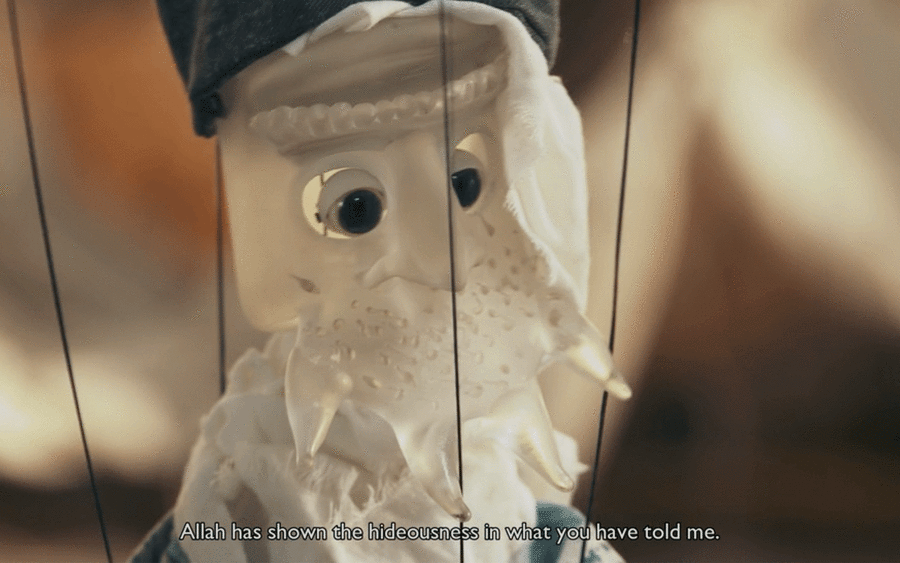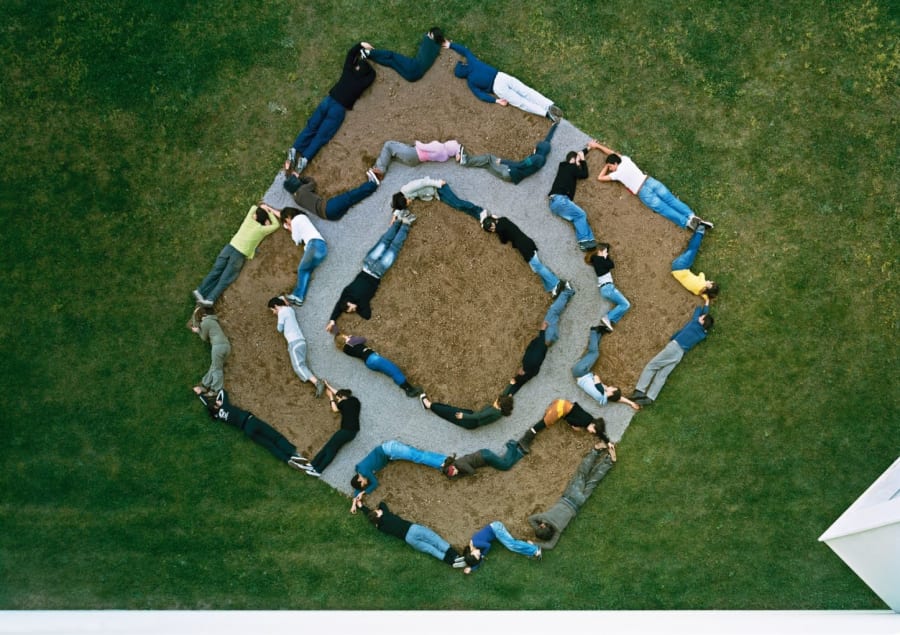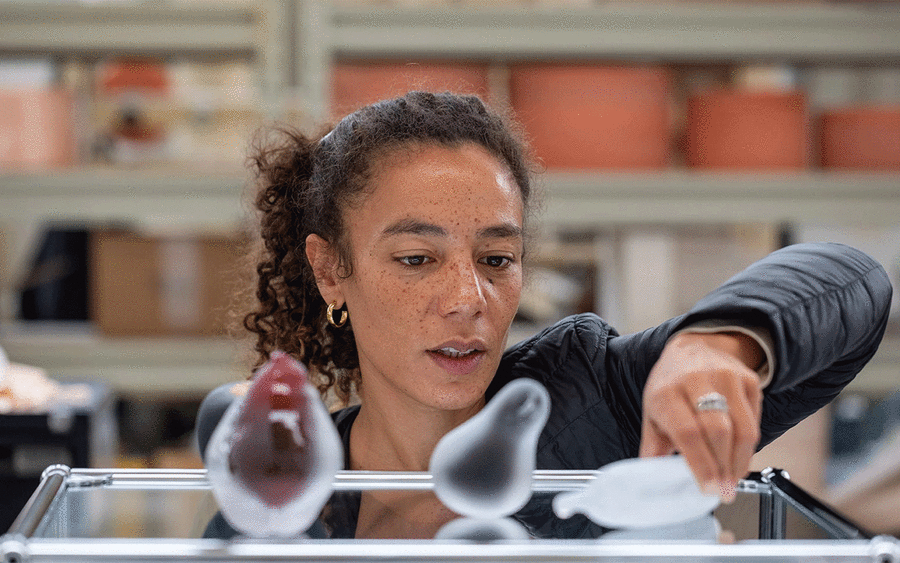I will always have a natural affinity with any artwork that is angsty or video-based. So choosing my highlights across Adriano Pedrosa’s exhibition ‘Stranieri Ovunque – Foreigners Everywhere’ and the collateral events should have been relatively straightforward. Yet, the task proved challenging, and my opinions may change once I’ve had the opportunity to process the busy opening week. However, for now, here are my greatest hits, spanning the official exhibition and independent projects. Prego.
Wael Shawky, Drama 1882, 2024
Single-channel video installation
Egypt Pavilion
In Egypt’s national pavilion, Wael Shawky presents an excellent new film, Drama 1882. In 45 minutes, the work rigorously deals with the history of Egypt’s nationalist Urabi revolution against imperial influence, which lasted from 1879 to 1882. The subject may sound very dense, but the film is wildly entertaining, presented in the form of a musical with hyperbolic theater sets and camp musical numbers. Drama 1882 is about how we tell our histories, alluding to the ‘movie magic’ of epic historical tales which dominated 1940s ‘Golden Age’ Egyptian cinema. History in Southwest Asia and North Africa is often related through collective oral storytelling and songs – seen in musical styles such as maqam or aïta. The technology of filmmaking, as well as the ‘musical’ cinematic genre, facilitates the visualization of such historiographic forms. You can also watch another recent film by Shawky, I Am Hymns of the New Temples (2023), in an exhibition at the Museo di Palazzo Grimani.
Diego Marcon, Fritz, 2024
Single-channel video installation
Complesso dell’Ospedaletto
Fondazione In Between Art Film often presents the most sophisticated off-site video installations during the Venice Biennale, and this year is no exception. Particularly notable in this year’s exhibition, ‘Nebula’, is Diego Marcon’s new film, Fritz (2024). More Tim Burton than Disney, the animated film depicts a macabre subject to an ecclesiastical yodel score by South Tyrolean composer, Federico Chiari. The video’s themes are enhanced by the baroque room; Marcon is one of the few video artists today whose filmic works, despite their regular theatrical screenings, are almost inseparable from their installation format. This can also be said of Basel Abbas and Ruanne Abou-Rahme, whose new adaptation of Until we became fire and fire us (2023-ongoing) is another highlight in the exhibition.
Devonté Hynes plays Julius Eastman
Musical performance
Palazzo Grassi
In response to Julie Mehretu’s exhibition ‘Ensemble’, Dev Hynes performed a series of pieces by one of my favorite composers, avant-garde American minimalist Julius Eastman (1940-1990). Eastman’s compositions are physically demanding of their performers, and intense for audience members, too. It felt good – at this point during the Biennale – to listen and become emotionally receptive, and give my eyes a break. Hynes, himself an incredibly gifted composer, opened with Eastman’s Femenine (1974), a source of inspiration for Mehretu’s cycle of paintings ‘Femenine in nine’. Mehretu’s exhibition itself is highly collaborative; a standout painting is by another artist, Untitled (2010) by David Hammons. Hynes will likely perform Eastman again elsewhere in the world, so keep your ears open.
Las Bordadoras de Isla Negra, Untitled, 1972
Embroidered canvas
‘Stranieri Ovunque – Foreigners Everywhere’, Arsenale
Active from the 1960s to 1980s, Las Bordadoras de Isla Negra were a sewing group from a coastal town in Chile who produced textiles depicting stories of women’s resistance. Their striking large-scale textile, Untitled (1972) is hung in the final room of ‘Stranieri Ovunque – Foreigners Everywhere’ in the Arsenale. Looking at the textile is akin to watching a film, taking in vignettes and scenes of labor performed by characters inspired by real people in the makers’ village. One can guess the many individuals involved through the color variety of pigmented threads as well as breaks in the material, where parts made by different hands were sewn together. If you liked that artwork, you should also make sure you see – in the same room – a batik painting on silk by Sangodare Gbadegesin Ajala (1948-2021), a Nigerian artist who practiced as a Ṣàngó high priest. It’s another standout textile artwork among the many that were included in the exhibition.
Titian, Annunciation, c.1535
Oil on canvas
Scuola Grande di San Rocco
During the opening of the Biennale, the Tate held a party (i.e., a sophisticated drinks reception) at the Scuola Grande di San Rocco. Amid all the Birkin bags was a recently restored 1535 painting by Titian, Annunciation. Maybe it was the prosecco, but this painting struck me in a way that felt very profound – more so than anything else I had seen that day. Aside from the painting’s obvious formal merit, this had to do with how the angel and Mary interact in the scene. The angel earnestly offers a flower to Mary, and she accepts it with grace. There is something so real and captivating in their facial expressions and their exchange. Such intimacy is something that is impossible to experience during opening week in Venice with – pardon the pun – tourists everywhere.
P.S. A special mention on the exhibition front must go to Fabio Cherstich’s ‘Amigos Y Amigas’, which showcases East Village artists from the 1980s including Jeff Perrone (1953-2023) and Patrick Angus (1953-1992), brilliantly curated at the dilapidated Palazzo Tiepolo. Another exhibition highlight is ‘Jean Cocteau: The Juggler’s Revenge’ at the Peggy Guggenheim Collection, as it powerfully evokes the energy and spirit of Cocteau, palpable as you walk around the palazzo – although perhaps I’m just sensitive to ghosts.
Róisín Tapponi is
a film programmer, writer, and PhD scholar based in London. She is founder of
Shasha Movies, a streaming service, distributor, and curatorial platform for
artist film and video from Southwest Asia and North Africa.
Caption for top image: Titian, Annunciation, after conservation. Photography by Matteo De Fina (detail).
Published on April 23, 2024.


